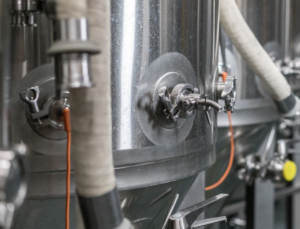
The ‘Golden Batch’ is your ideal batch, the one that came out perfectly, the way you intended: the recipe is followed perfectly, and the process stays on course.
And the expectation is that once such a Golden Batch has been made, the sweet spot of those manufacturing conditions can be replicated.
The Challenge
The real challenge you probably have is that, to replicate that Golden Batch, your manufacturing system needs to recreate the exact conditions that previously produced your ideal batch.
To be able to recreate those Golden Batch conditions, though, requires recording process variables over time and analyzing the resulting data to determine the critical attributes.
Therefore, achieving an ideal (golden) outcome such as yield, or quality, is a lot more complicated than simply following the same recipe for each batch.
The dynamic relationships in the process along with the variability in materials (for instance, you found a different media supplier, or the material in an O-ring changed), plus a range of qualifications and equipment often mean that multi-variate relationships must be constantly understood in the existing operating context.
This dynamic operating context challenges the traditional fixed understanding of the Golden Batch because multiple control parameters must be tracked and acted upon.
And while the system cannot always recreate the exact conditions that previously produced the ideal batch, there are techniques and tools available that allow us to take advantage of the degrees of freedom provided by the design and control spaces defined during the product and process development.
Achieving golden outcomes
A machine learning (ML) batch analytics application can help you regularly achieve golden outcomes by determining the best possible result given many factors and optimizing the process using what has been learned from the dynamic relationships between process variable data streams.
From historical manufacturing parameters and batch process readings, the ML application can identify the key parameters contributing to the ideal outcome, and suggest the best parameters to drive the process towards that result.
Furthermore, if connected to real-time production readings, the ML application can predict if a batch is deviating beyond acceptable criteria and either alert you or, if connected to the manufacturing systems, automatically make setpoint adjustments for you.
Though, what you might prefer, the ML application can tell you when the batch is within specification, as well, as providing you the evidence needed to release the batch sooner.
Especially if it is Golden.
Summary
Repeating the production of a Golden Batch requires recreating the exact conditions that produce the ideal batch. Though, this requires recording process variables and analyzing the data to determine the critical parameters.
A machine learning batch analytics application can help you deliver a Golden Batch by identifying the key parameters from the historical manufacturing parameters and batch readings.
If you want to know more about how to apply predictive modeling to optimize batch performance, please watch this recent webinar (video below).
One more thing
The ML application we are referring to here can also help you explore other ranges of the acceptable design space, starting from the Design of Experiments (DoE) phase and into Process Development. In a future post, we will discuss how ML can be applied to DoE and Process Development.
Until then.